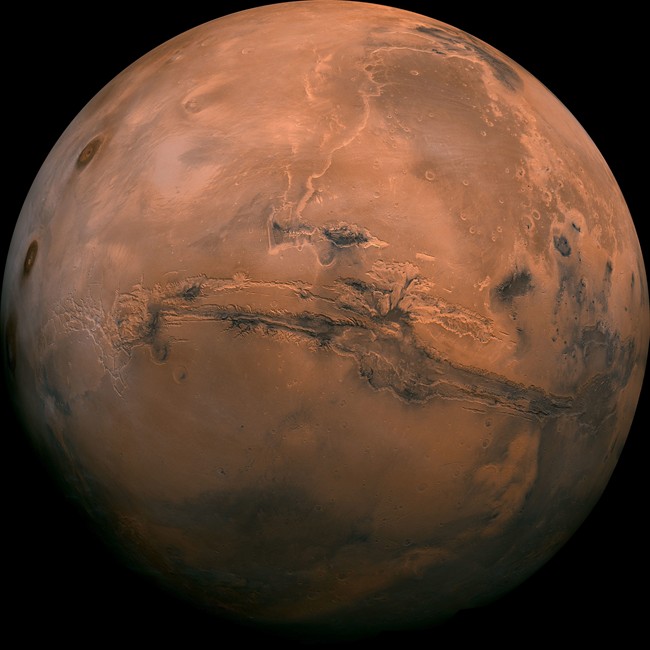Is there life on Mars? While NASA has been attempting to answer this question since the first pictures of the Red Planet came out in the mid-1960s, a new revelation might suggest otherwise.

New research conducted by two Edinburgh University astrobiologists, Jennifer Wadsworth and Charles Cockell, suggests that compounds found in Martian soil are turned into potent bactericides when affected by the planet’s ultraviolet light. This effectively sterilizes the upper layers of the planet’s landscape.
WATCH: Pence declares U.S. will return to moon, land on Mars

The Guardian reports that this discovery will have a huge impact on the search for extraterrestrial life on Mars, in that missions may have to dig far underground to find life forms that reside there or may have resided there in the past. In their research paper, Wadsworth and Cockell refer to the surface of Mars as hostile or “inimical to life.”
WATCH: Donald Trump signs bill authorizing NASA funding to explore Mars

Wadsworth’s research was driven by the initial discovery of oxidants known as perchlorates in Martian soil a few years ago, a man-made and naturally occurring chemical used in the production of rocket fuel. While many scientists suspected that these perchlorates could be toxic, in theory, alien bacteria could find a way to use these chemicals as an energy source. If bacteria could survive in perchlorate-rich brines, writes the Guardian, aliens could be living in the damp patches on Mars.
WATCH: NASA releases images of dust devil spotted on Mars

However, when Wadsworth looked at what happened to a common soil bacterium when it was mixed with magnesium perchlorate and subjected it to ultraviolet rays similar to that of Mars, she found that the bugs were wiped out twice as fast when perchlorate was present.
“These properties suggest that the mere presence of liquid water seeps, thought to be good locations to search for life, does not imply environments fit for life,” Wadsworth and Cockell said in their research.
- Peel police chief met Sri Lankan officer a court says ‘participated’ in torture
- Budget 2024 failed to spark ‘political reboot’ for Liberals, polling suggests
- Wrong remains sent to ‘exhausted’ Canadian family after death on Cuba vacation
- Liberals having ‘very good’ budget talks with NDP, says Freeland
These findings indicate that the damp patches on the surface of Mars spotted from orbit may not be the most likely place to find alien microbes after all. In an interview, while Wadsworth doesn’t rule out life on Mars, she does have a few suggestions about how to proceed in searching for it.
“I can’t speak for life in the past. As far as present life, it doesn’t rule it out but probably means we should look for life underground where it’s shielded from the harsh radiation environment on the surface,” Wadsworth told the Guardian.
While these findings might temporarily deter groups preparing to colonize the Red Planet, Astronomy Magazine points out the positive. NASA has always been extremely careful about contaminating other planets with Earthly bacteria. If Mars’ environment is so toxic to bacteria that it can’t even survive on the surface, contamination may no longer be as big a concern.




Comments